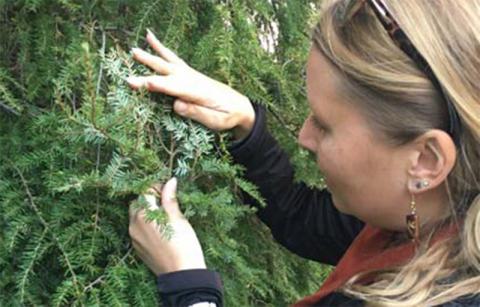The Elimination of the Hemlock Woolly Adelgid Quarantine

Why was it eliminated?
The hemlock woolly adelgid (HWA) quarantine has been eliminated because it no longer delivers its intended impact on the spread of this invasive insect within New Hampshire. The quarantine was implemented when the greatest risk of introduction and spread of HWA within the state was by movement of trade articles – nursery stock and forest products. This quarantine was effective and necessary when HWA was of limited distribution in the state. However, as HWA populations in the state have expanded, the documented movement of this pest by birds and wildlife has exceeded the potential risk of introducing HWA through trade. With known populations of HWA in 120 towns in 9 counties, birds and wildlife will continue to spread this destructive pest. The movement of HWA by wildlife is not something that can be addressed by regulation.
What does this mean for future regulation?
Eliminating the HWA quarantine does not eliminate New Hampshire’s ability to address HWA infestations on nursery stock or forest products. RSAs 433:28 – 433:30 provide the authority to inspect nursery stock, to require destruction or treatment of infested nursery stock, and to prohibit the sale of infested nursery stock in the state. RSA 227-K:17 prohibits the sale, offering for sale, giving away, moving or shipping any tree or forest product into or within New Hampshire that is known or believed to be infested with a forest pest declared as a dangerous insect or disease. Agr 3802.01 provides that no person shall collect, transport, import, export, move, buy, sell, distribute, propagate, or release living HWA. In brief, state agencies continue to have the authority to address HWA on nursery stock and forest products.
What is the state’s role?
The distribution of HWA in the state has reduced the value of the quarantine as an effective plant protection response. HWA continues to pose a threat to the state’s native hemlock populations. Responding to HWA infestations is warranted. Survey, inspection, education, biocontrol and management efforts are important plant protection responses to this pest. The Division of Plant Industry will continue to inspect hemlocks as part of their nursery inspections. The Division of Forests and Lands will continue to respond to detections of HWA in forested settings. Their program includes annual surveys, cultural controls, pesticide applications, best management practices (BMP) recommendations, and bio-control releases.
What can others do?
- Nurseries and foresters should use BMPs to reduce their risks.
- The public should learn to identify HWA and report where it is found.
- Landscape hemlocks should be protected from drought, and when infestations are suspected, they should be confirmed by a tree care professional who can offer assistance on managing tree health.
More information can be found at the N.H. Division of Plant Industry website or www.NHBugs.org.
Piera Siegert, State Entomologist, NH Dept. Agriculture, Markets & Food
